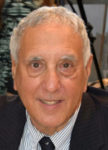
By Donald H. Harrison

SKAGWAY, Alaska – Our family had enjoyed our salmon bake so much in Juneau, we decided to partake in another one here in Skagway, and while we were at it, to take in a show at the “Liarsville” campgrounds and then to pan for some gold, which we later learned had to be imported from Canada because “there ain’t none around these parts.”
We were able to purchase tickets from the folks at Alaska Travel Adventures, whose salmon buffet we had enjoyed the previous day in Juneau. They call their encampment in Skagway “Liarsville” for the very good reason that lying is something of a territorial sport here.
In the late 19th century, prospectors came here looking for gold, but didn’t find any because the fields of the Alaska Gold Rush were approximately 500 miles away. “So,” explained the narrator of a 15-minute show at the Liarsville campgrounds, “those reporters decided it was just much too far and too heavy to lug their typewriters. So, what do you do when you want to collect that paycheck, but you don’t want to work? You can do what those reporters did. They planted themselves right here. They made Liarsville their base camp, collected the tall tales and rumors of gold tricklin’ down the mountain and wrote them up as their very own eyewitness accounts of things happening over 500 miles north.”

The writers, enjoying the opportunity to fabricate their stories, spun such tales as “all you have to do is reach down to the ground and pull up potato-size nuggets, stick ‘em in your knapsack, and go back to Skagway and be extremely wealthy.”
In reality, commented our narrator who was decked out in prospector’s garb, “it’s a lie, all a lie. Let me tell you something, that White Pass Trail ain’t no easy wagon road. It is a narrow and treacherous mountain pass that switches sides and plunges. … It is even known as the Dead Horse Trail … Thousands and thousands of men had to turn back. … They had to head back down here to Liarsville. And guess who they ran into! Newspaper reporters! The very same ones that give us those fair and balanced stories that we all know and love to this day!”
To give us the flavor of the times, an actress with the stage name “Baddy Betty” recited portions of Robert W. Service’s poem, “The Ballad of Blasphemous Bill.”
The first stanza reads:
I took a contract to bury the body of blasphemous Bill MacKie
Whenever, wherever or whatsoever the manner of death he die —
Whether he die in the light o’day or under the pea-faced moon;
In cabin or dance-hall, camp or dive, mucklucks or patent shoon;
On velvet tundra or virgin peak, by glacier, drift or draw;
In muskeg hollow or canyon gloom, by avalanche, fang or claw;
By battle, murder or sudden wealth, by pestilence, hooch or lead —
I swore on the Book I would follow and look till I found my tombless dead.
The poem, which you may read in full by clicking here, ends with old Bill’s body being frozen so stiff that amputation of his limbs was required to fit him into his coffin.
Following recitation of the ballad, another actress (her stage name was Miss Sluicy Lucy) explained to us how to recover the 18-carat specks of gold that had been placed in pans beneath clumps of dirt and gravel.

“The gold is the heaviest thing in your pan, so it will sink to the bottom,” she said. But in the process one needs to “break up the dirt and the gravel” that was placed in the pan with the gold, and, as the Neil Sedaka song once advised us, “Breaking up is hard to do.”
“The first step,” she said, is to “scoop up the water, then shake your pan back and forth, then tilt the pan forward, and pour off the dirt.”
The narrator and the two actresses at that point began to chant, “Scoop, shake, tilt, pour…. Scoop, shake, tilt pour” until all of us got into the rhythm. Eventually at the bottom of our individual pans, we found a few tiny gold flakes, which we were advised to lift by pressing them with our fingers, and then to use our thumbs to flick them from our fingers into a Ziploc baggie.
My own golden opportunity was to take photos of the seven other members of my family who were following that procedure. Some retrieved two specks of gold; others as many as six specks. Whether it was real gold, or the “fools” variety only an assayer can tell you.
And I’m not an assayer, I’m an essayer.
*
Harrison is editor of San Diego Jewish World. He may be contacted via donald.harrison@sdjewishworld.com